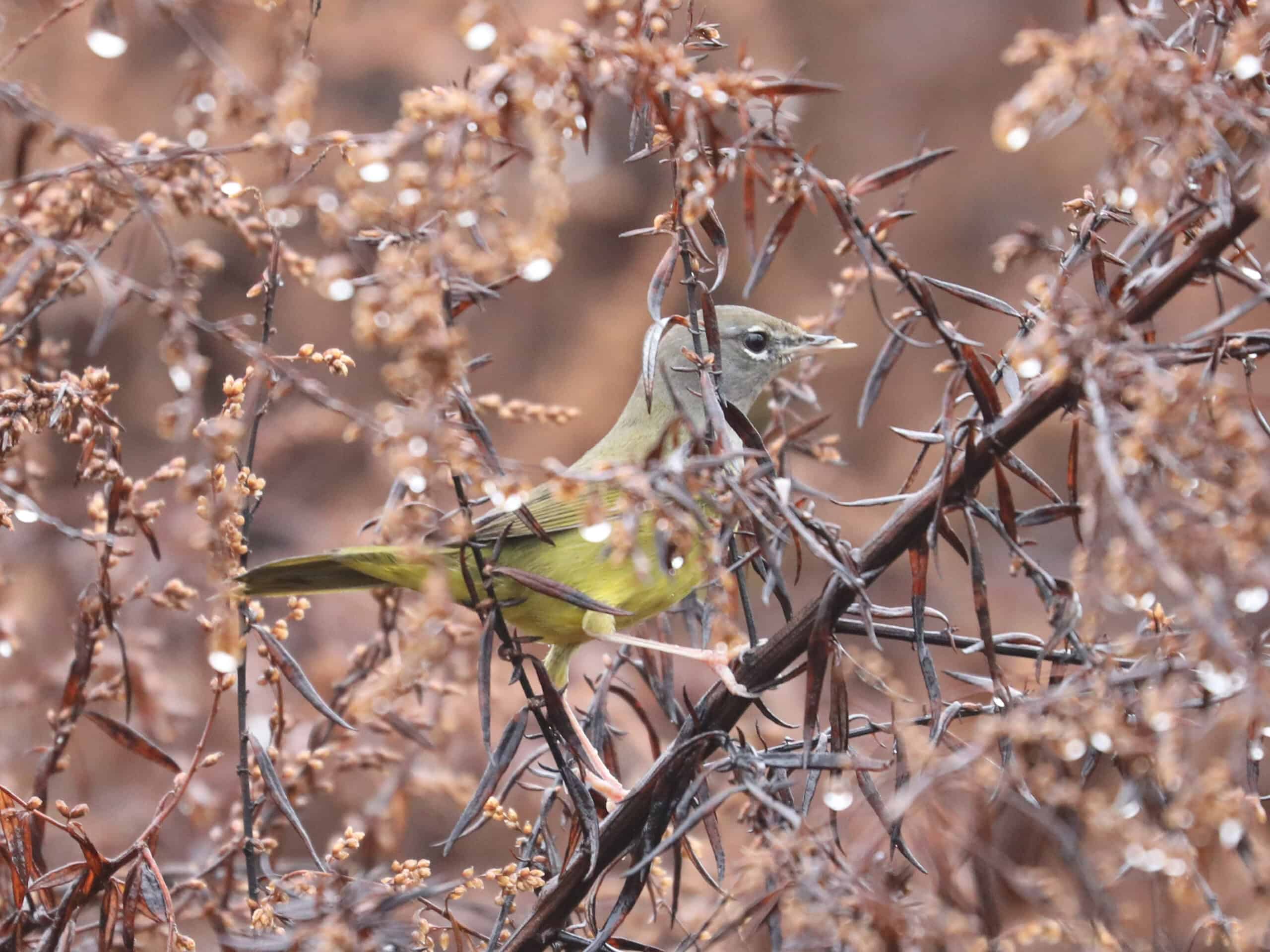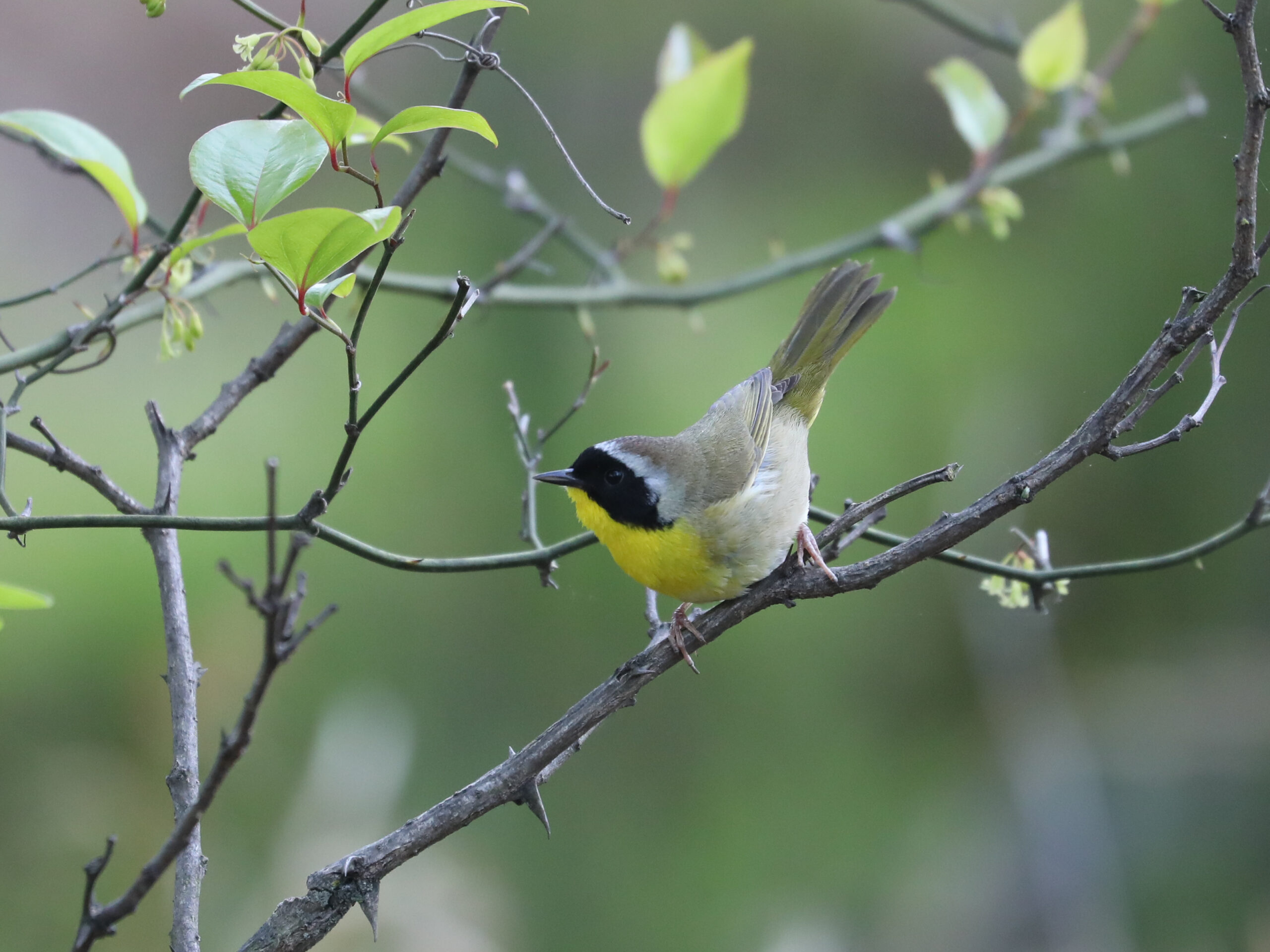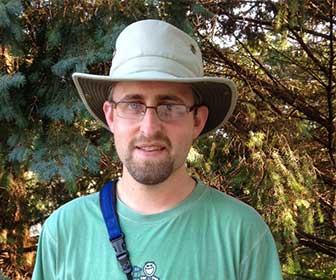Skulker: MacGillivray’s Warbler
A few days ago a birdwatcher found a MacGillivray’s Warbler less than ten miles from my house. My son and I spent a rainy hour searching for it on Thanksgiving morning. We heard it calling within five minutes of arriving, but it took the full hour before we got a decent look at it. I was lucky to have my camera up for the photo above, because that was the only time it perched in the open, and it was there for less than two seconds. MacGillivray’s Warblers are called “skulkers,” a term for birds that hide in dense vegetation and are very difficult to see.
MacGillivray’s Warblers are usually found nesting in the western United States, from New Mexico to northern California, all the way north to southern Alaska and the Northwest Territories in Canada. In winter, they fly to western Mexico and parts of Central America. On rare occasions, they get lost during migration and end up in Pennsylvania. This is only the second MacGillivray’s Warber I’ve seen – one showed up in Dauphin County in 2013.
MacGillivray’s Warbler was named by the famous American ornithologist John James Audubon for his friend William MacGillivray, a Scottish ornithologist. Like other North American birds that were named after people, the name of the MacGillivray’s Warbler will eventually be changed. New names I’ve seen suggested for this species are Thicket Warbler and Brook Warbler, references to the streamside thickets where they nest in western North America.
Although MacGillivray’s Warblers are rare in our state, there are four closely related warblers that are found every year in Pennsylvania, including the Common Yellowthroat (see photo below), one of our most common breeding warblers. The other three are Kentucky Warbler, Mourning Warbler, and Connecticut Warbler.
Skulker: MacGillivray’s Warbler
A few days ago a birdwatcher found a MacGillivray’s Warbler less than ten miles from my house. My son and I spent a rainy hour searching for it on Thanksgiving morning. We heard it calling within five minutes of arriving, but it took the full hour before we got a decent look at it. I was lucky to have my camera up for the photo above, because that was the only time it perched in the open, and it was there for less than two seconds. MacGillivray’s Warblers are called “skulkers,” a term for birds that hide in dense vegetation and are very difficult to see.
MacGillivray’s Warblers are usually found nesting in the western United States, from New Mexico to northern California, all the way north to southern Alaska and the Northwest Territories in Canada. In winter, they fly to western Mexico and parts of Central America. On rare occasions, they get lost during migration and end up in Pennsylvania. This is only the second MacGillivray’s Warber I’ve seen – one showed up in Dauphin County in 2013.
MacGillivray’s Warbler was named by the famous American ornithologist John James Audubon for his friend William MacGillivray, a Scottish ornithologist. Like other North American birds that were named after people, the name of the MacGillivray’s Warbler will eventually be changed. New names I’ve seen suggested for this species are Thicket Warbler and Brook Warbler, references to the streamside thickets where they nest in western North America.
Although MacGillivray’s Warblers are rare in our state, there are four closely related warblers that are found every year in Pennsylvania, including the Common Yellowthroat (see photo below), one of our most common breeding warblers. The other three are Kentucky Warbler, Mourning Warbler, and Connecticut Warbler.
About The Author
Dan Hinnebusch is the Ornithologist for Wild Birds Unlimited. Click to learn more.





